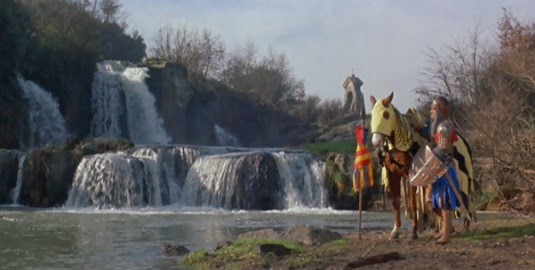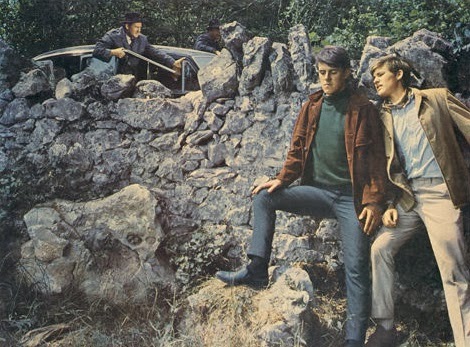Philip Dunne started working at Fox studios in 1930 as a script reader but when they fired him, during one of their recurring financial crises, he obtained a job at MGM where he worked on his first script, The Student Tour. Although the script was very bad, according to Dunne's own opinion, it led him to becoming a junior writer for Jesse L. Lasky, an independent producer at Fox. Here, he collaborated with Rowland Lee on an original script for a film called I Am Suzanne and on the swashbuckler The Count of Monte Cristo ( 1934 ) starring Robert Donat. The New York Times praised the script and its high fidelity to Dumas dialogue, remarking that it was amazing how well his words had survived in lucidity and grandeur through over a century. In truth, only seven words of dialogue were from Dumas' own writing! Philip Dunne had not even read the book prior to writing the script.
Later, Dunne attributed the success he achieved in his career as a screenwriter to Rowland Lee. After contributing work on several screenplays for Jesse L. Lasky ( Helldorado, Under Pressure, Magnificent Obsession, The Last of the Mohicans ), Dunne received a telegram in 1935 announcing that he had received a long-term contract from Darryl F. Zanuck to work at 20th Century Fox studios. He remained there for twenty-five years.
Angharad:
Look now, you are king in the chapel. But I will be queen in my own kitchen.
Mr. Gruffydd
You will be queen wherever you walk.
Angharad
What does that mean?
Mr. Gruffydd
I should not have said it.
Angharad
Why?
Mr. Gruffydd
I have no right to speak to you so.
[he starts to leave]
Angharad
Mr. Gruffydd, if the right is mine to give, you have it.
The 1940s were Dunne's golden decade, an era when he wrote a number of extremely fine scripts for some of the best films to come out of 20th Century Fox. It all began with Stanley and Livingstone, released during that prime year in Hollywood - 1939. This film established Dunne as an excellent screenwriter at the studio and led him to many other fine projects, such as The Rains Came ( based on Louis Bromfield's bestseller ), and Johnny Apollo. In late 1940, Zanuck handed Dunne the novel "How Green Was My Valley" and asked him to write an epic script for an epic film. How Green Was My Valley was going to be 20th Century Fox's answer to Gone with the Wind. Twelve weeks later, when Dunne submitted his four-hour long script, as promised, he was told that it was "twice too long". Along with director William Wyler, Dunne worked to cut the script to a manageable length, but couldn't find out how until Roddy MacDowall was selected as the leading character, Huew. He was such a delightful child that Dunne and Wyler decided to eliminate their original idea of having Huew grow to manhood mid-way through the film ( Tyrone Power was supposed to have played Huew as a man ).
How Green Was My Valley earned ten Academy Award nominations, winning in the best picture, best director, best supporting actor, best cinematography and best art direction categories. Here Comes Mr. Jordan snagged the Best Writing, Screenplay award, which left Dunne disappointed. Nevertheless, he bounced back quickly and began work on Son of Fury: The Story of Benjamin Blake ( 1942 ) starring Tyrone Power.
The Late George Apley ( 1947 ) was another one of Dunne's witty screen adaptations. John P. Marquard, author of the novel, once told Dunne that he preferred his screenplay to the George S. Kaufman stage adaptation. The production was a happy one; it was a great success at its premiere at Radio City Music Hall and the New York Times gave it rave reviews, but alas, outside of the East, it did not fare well at the box-office. Nevertheless, since the production team enjoyed each other's company so much, director Joseph L. Mankiewicz, producer Fred Kohlmar and Dunne reunited to bring another best-selling novel to the screen - the delightful The Ghost and Mrs. Muir.
Dunne spent seven weeks in the desert splendor of Palm Springs working on the script and, even though he did not have to alter the book's dialogue very much, created a highly entertaining fantasy which, once again, only fared moderately upon its release. However, since then, it has become one of 20th Century Fox's most endearing films, and as Dunne said in his autobiography "I am asked more questions about The Ghost and Mrs. Muir than about any other picture of mine except How Green Was My Valley"
Captain Gregg:
[discussing Mr. Fairley] And the way he was smirking at you, like a cat in the fishmonger's! You should have slapped his face!
Lucy Muir:
Why? I found him... rather charming.
Captain Gregg:
"Rather charming" Now you're starting to talk like him!
Lucy Muir:
How in blazes do you want me to talk?!
Captain Gregg:
That's better!
In the 1950s, Dunne, his wife Amanda and their three daughters, moved to a Malibu beach house built to suit. It would remain their home for the next 40 years and become a social and political hotspot for Hollywood liberals throughout the next decade. Dunne was active in politics ever since he arrived in Los Angeles in the early 1930s. During World War II he headed the Motion Picture Bureau of the Office of War Information, helped form the Committee for the First Amendment ( along with William Wyler and John Huston ) and was also one of the founders of the American Screen Writers Guild.
Biblical films were all the rage in the 1950s and it was work on one of these ( David and Bathsheba ) that earned Dunne his second Academy Award nomination. David and Bathsheba proved to be a box-office success and the big brass at Fox, not one to turn their heads to a profit-making venture, decided to plunge the studios talents into another dramatic biblical adaptation - The Robe. This film, starring Richard Burton and Jean Simmons and featuring the talented writing of Dunne, became an even greater success than David and Bathsheba, grossing over $36,000,000 upon its release.
Quickly following on its heels was a sequel, again penned by Dunne, entitled Demitrius and the Gladiators ( 1954 ). An entertaining - but lesser known - film about an Egyptian doctor during the eighteenth dynasty of Egypt, The Egyptian ( 1954 ), was Dunne's final screen assignment before he ventured into becoming both a screenwriter and director.
One of his first films, The View from Pompey's Head, was a lovely little melodrama, dripping with soap and starring some mighty pretty folk such as Dana Wynter and Richard Egan. Dunne must of enjoyed being in control of the filming of the scripts that he penned, for he directed ten more films in the next ten years, including Ten North Frederick, Blue Denim, In Love and War, Wild in the Country and Lisa.
His final film, Blindfold ( 1965 ) gave him the cue that it was time to end his directing career. Talented as he was, his pencil was indeed sharper than his camera eye. During the 1970s and 1980s, Dunne quit the entertainment industry entirely and concentrated on writing as a syndicated columnist and essayist for the Los Angeles Times and Time magazine. He also worked on his memoirs, Take Two: A Life in Movies and Politics, which much of this article was based upon.
Philip Dunne passed away on June 2, 1992 at the age of 84....but like most writers, his words will never pass on, always being revived on the screen with each subsequent viewing of his films.
You must make your own life amoungst the living and, whether you meet fair winds or foul, find your own way to harbor in the end.
( The Ghost and Mrs. Muir )
( The Ghost and Mrs. Muir )











